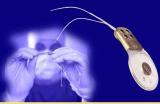Health Topics
-
Healthy Living
-
|
| |
| Cochlear Implantation: Correcting Profound Deafness
|
| Dr Sunil Narayan Dutt
|
| |
|
|
Did you know that cochlear implant (CI) is the first man-made device to completely replace a special sense organ? Not only that, CI actually interacts with the human nervous system more closely than any other prosthetic device. All over the world, CI is allowing profoundly deaf children understand and develop speech, enter mainstream school and lead normal social activity. It can also enable an adult, who is rendered profoundly deaf due to injury or infection, to hear normally.
Understanding what causes the problem of deafness
The part of the inner ear that serves hearing is called the cochlea. The cochlea has two and a half turns with fine sensory end organs called the hair cells in the Organ of Corti. It is here that sound stimuli are converted to electrical impulses, and are transported along the hearing (auditory) nerve and its connections to the temporal lobe of the brain that decodes the information. Sound is actually carried to the inner ear via the outer and middle ears. The middle ear acts as a transformer with the help of three of the tiniest bones in the body, the malleus, the incus and the stapes. |
| |
Conditions that affect the middle ear cause ‘conductive deafness’ that is usually reversible with medical or surgical management. In contrast, illnesses that cause inner ear damage, and hence ‘sensorineural deafness’, render the patient more severely hearing-challenged. Often, this condition is irreversible.
As regards the cause for profound hearing loss, there are several conditions that can affect the cochlear hair cells and the auditory nerve. Profound deafness since birth (congenital deafness) has an incidence of 1 to 3 per 1000 live births. But the causes for ‘acquired’ deafness could be varied. Infections such as viral labyrinthitis (measles, chickenpox), meningitis (bacterial, tuberculous, viral), head injuries and skull fractures, drug induced deafness (Ototoxicity), age-related deafness (Presbyacusis) and tumours are some of the acquired causes of deafness.
Deafness (Re)habilitation
There are several devices available for rehabilitating those with deafness. Mild, moderate and severe deafness may be suitably rehabilitated by one of a multitude of hearing aids that are available in the market. In fact, there are several ways in which these commercial types of hearing aids could be worn: in a coat-pocket (body-worn aids), spectacle-mounted, behind-the-ear (BTE), in-the-ear (ITE), in-the-canal (ITC) and completely-in-the-canal (CIC). The devices themselves may be analogue-type, programmable or digital hearing aids. There are a number of audiological centres and hospitals in India that prescribe and dispense these hearing aids. |
| |
 |
But when it comes to deafness categories such as severe-profound or profound, they are not helped by the above mentioned commercial types of hearing aids. Cochlear implantation is the only available option for such patients. |
|
Parts of a cochlear implant
A cochlear implant converts acoustic information to electrical impulses and presents this information directly to the auditory nerve, bypassing the damaged cochlear hair cells. In order to present the range of frequencies found in speech, it is necessary to have multiple electrodes within the cochlea so as to take advantage of the tonotopic arrangement of the auditory nerve fibres. Moreover, frequency discrimination is essential for the perception and discrimination of speech sound.
Tonopic arrangement or ‘tonotopicity’ is the stimulation of the basal regions of the conch-shaped cochlea that results in perception of high pitched sounds, and stimulation of the apical turns, results in perception of low pitched sounds, with all the corresponding frequencies in between. |
| |
 |
A cochlear implant consists of ‘external parts’ that are worn on the outside of the body and ‘internal parts’ that are implanted within the ear by a surgical procedure. The external parts include: the microphone, the speech processor and the stimulator device. The internal parts include: the receiver-stimulator package with the implanted electronics, the conductor link and the electrode array. |
|
In simple terms, sounds are received by the microphone, digitized and processed in the speech processor. Then via the transmitter and receiver coils, the sounds are transported to the active cochlear electrode and its various channels to stimulate different areas of the hearing nerve fibers.
‘Speech Processing’, in the context, is actually the way an implant takes in speech, analyzes the frequency content of that speech, and presents it to the auditory nerve fibres. Speech processors may be housed in a cigarette-pack sized box, worn under the patient’s clothes, and connected to the microphone by a cord, or housed in a miniaturized ear-level processor behind the ear. |
| |
|
|
| |
|